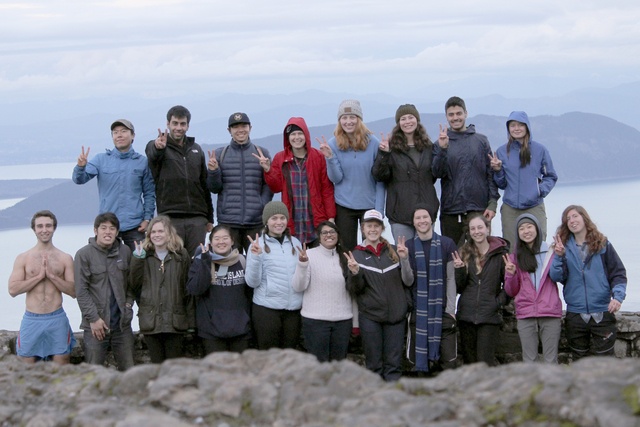A line of college students heads into Laura Tidwell’s eighth-grade science class. On this rare occasion, more adults fill the room than children. Tidwell introduces the group of 19 students and one teacher as visitors from the University of Southern California.
The college students spent last week on Orcas Island as part of USC’s alternative spring break program, which allows students to give back to communities during their time off. They have come to Orcas for the past few years.
Saleeta Rajwani, a senior studying cognitive science and human biology, is coordinator of the Orcas group.
“I really wanted to learn more about the environment,” said Rajwani.
During their time with the eighth grade class, they spoke with the kids about their majors and where they are from. One student is from South Korea, one from Saudi Arabia and the rest from various locations throughout the United States. Their majors vary wildly as well, from classical saxophone to aerospace engineering.
After introducing themselves to the classroom, they split off into little groups for one-on-one discussion with the eighth-grade students. They shared stories about their lives, where they’re from, college and other topics with Tidwell’s students. Then, 15 minutes before class ended, the kindergarten class came in, and the college and middle school students read to them.
Tidwell said she always tries to have the USC students visit her classroom during their vacation, to give her students the option to view these college kids who are devoting their break to volunteer services.
The university program offers trips to six different locations during spring term. In addition to Orcas, students can travel to Yosemite, to work in youth justice and environmental protection; New Mexico, to care for homeless and rescued animals; Baltimore, to help with health in an underserved area; Guatemala, to aid children health and education; and Peru, to assist the aging underprivileged population.
On Orcas, the group focuses on Moran State Park enhancements and environmental sustainability. In the past they planted new trees in the clear-cut section which had been devastated by laminated root rot and created and restored trails in the park.
This year, the group focused their attention on dispersing the recently cut trees in the park to promote natural decomposition and to discourage people from creating their own trails. They also removed the tubes placed around the new growth trees, which had kept the deer from eating the saplings; and hauled wood planks to the Twin Lakes trail for bridge restoration.
The students not only give their time during spring vacation to come volunteer, but are still expected to pay fees for the trip.
A trip to Orcas costs each student roughly $1,000; the school offers payment plans, personal and group fundraising and the occasional scholarship is available to students for volunteering.



